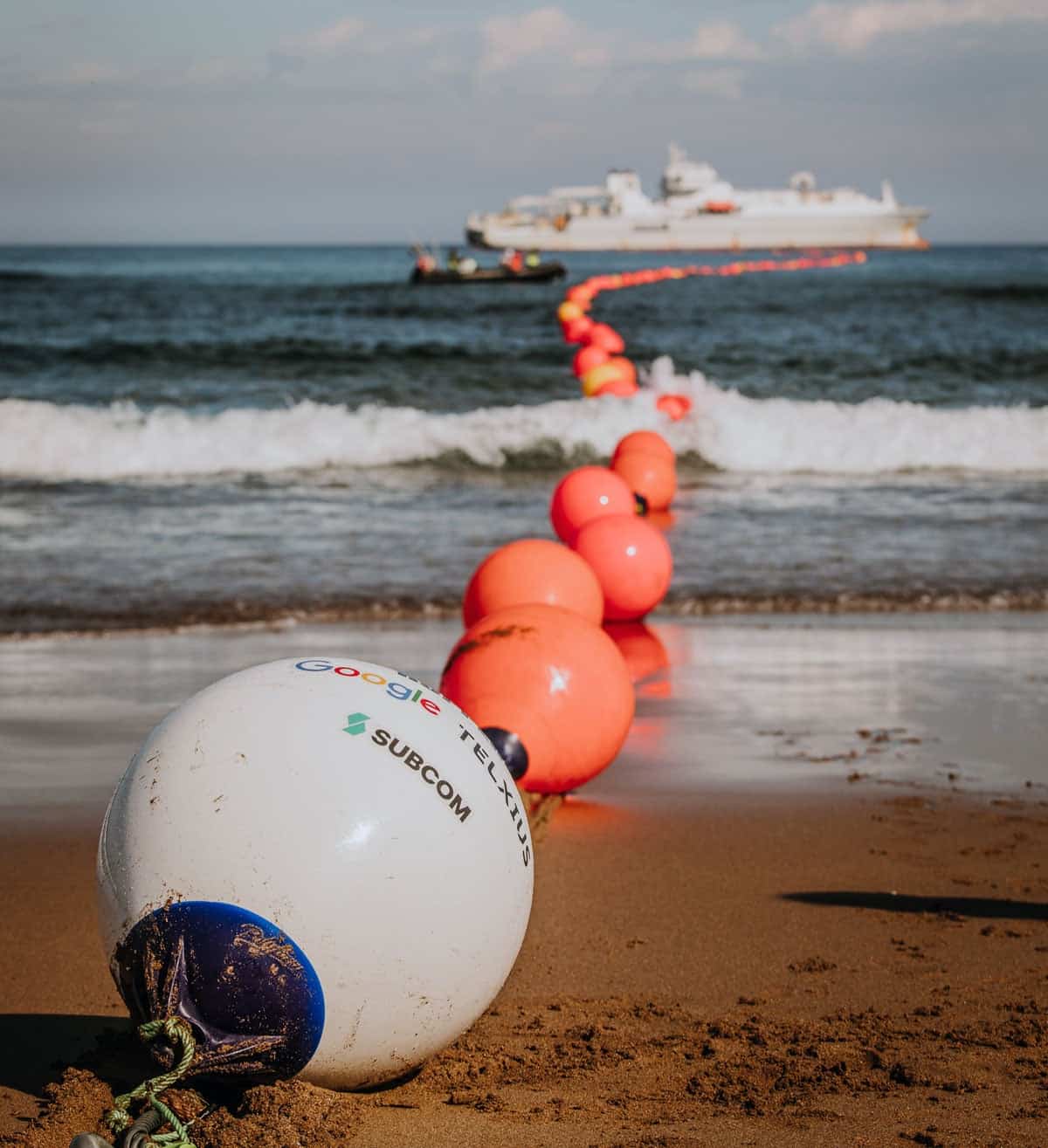Meta, the parent company of Facebook, Instagram, and WhatsApp, is preparing to build an undersea fiber optic cable that will circle the globe, according to sources close to the project. This ambitious infrastructure, with an estimated length of 40,000 kilometers and a cost that could exceed $10 billion, would mark a milestone in the company’s efforts to ensure a reliable and high-capacity data flow for its platforms.
A Unique Project
Unlike previous projects, this would be the first undersea cable fully owned by Meta. The company, which currently has stakes in 16 existing undersea networks, such as the 2Africa cable, plans to take full control of this new infrastructure. This approach contrasts with typical practices, where cables are often financed and managed by consortia of telecommunications operators.
The cable, according to initial projections, will follow a “W” shaped route, connecting the east coast of the United States with India via South Africa, and then returning to the west coast of the United States through Australia. This route has been strategically designed to avoid geopolitically tense areas, such as the Red Sea, the Strait of Malacca, and the South China Sea, which have been critical points for telecommunications infrastructure in the past.
The Reasons Behind the Investment
Meta, which generates more revenue outside North America than in its home market, is seeking to prioritize network capacity with this project to ensure optimal service quality on its platforms. The company’s applications, accounting for 10% of global fixed internet traffic and 22% of mobile traffic, require robust infrastructure to handle the growing volume of data.
According to industry analysts, such investments also respond to the need for independence among tech giants. “Tech companies have acknowledged that they can no longer solely rely on traditional operators. If they want to ensure the end-user experience, they need to build their own infrastructure,” commented Ranulf Scarbrough, an analyst in the undersea cable industry.
In addition to operational efficiency, investing in undersea cables can have a significant economic impact on connected regions. Meta has previously indicated that projects like Marea in Europe have contributed hundreds of billions of dollars to local economies.
The Role of Artificial Intelligence
While sources close to the project state that it’s too early to confirm if artificial intelligence (AI) will be a key factor in this cable, analysts see a potential connection. India, one of Meta’s largest markets, is a strategic point of interest in this operation. The country has over 375 million Facebook users, 363 million on Instagram, and 536 million on WhatsApp, and has shown a high level of adoption of the company’s AI tools.
Moreover, India is positioning itself as an emerging hub for AI model training, thanks to its lower infrastructure costs compared to the United States. Experts such as Sunil Tagare suggest that the cable could facilitate the development of data centers in India, focused on training advanced AI models, leveraging the growing demand for computing in the country.
Logistical and Technical Challenges
The construction of an undersea cable of this magnitude will face several challenges, including the limited availability of specialized resources, such as undersea cable-laying ships. “The ships are booked years in advance, which complicates the planning for a project of this scale,” noted Scarbrough. One possible solution would be to build the cable in segments, extending the project timeline over several years.
Meta and the Evolution of the Undersea Cable Market
This project reflects a significant shift in the dynamics of the undersea cable market. For decades, these networks were dominated by telecommunications operators, but now tech giants are taking on more prominent roles as owners and primary investors. Google, for instance, has stakes in 33 undersea routes, some of which are under its sole control. Amazon and Microsoft are also major players in the sector, although they do not yet fully own any cables.
Meta’s decision to build and own a global cable not only ensures its control over critical infrastructure but also strengthens its position in an increasingly competitive market. As data demand continues to grow and geopolitical tensions threaten the stability of existing networks, projects like this are essential for the future of global communications.
A Glimpse into the Future
Meta plans to make an official announcement about the project in early 2025, providing details on the route, capacity, and long-term goals of the infrastructure. Although the cable will take years to become fully operational, its impact could redefine global connectivity, not only for Meta but also for the regions involved.
via: TechCrunch

